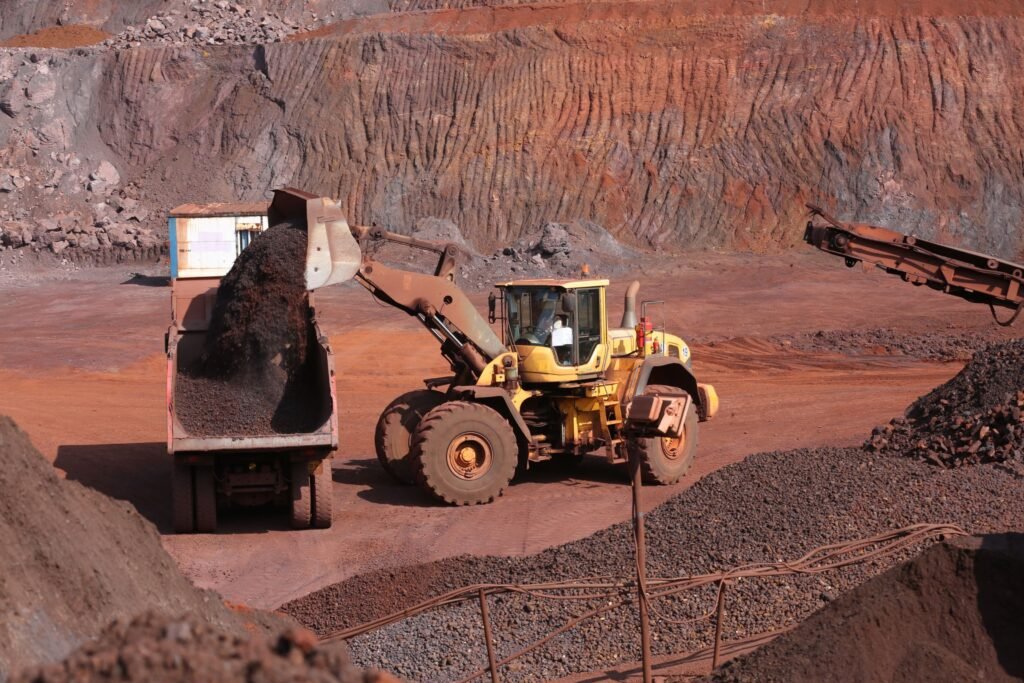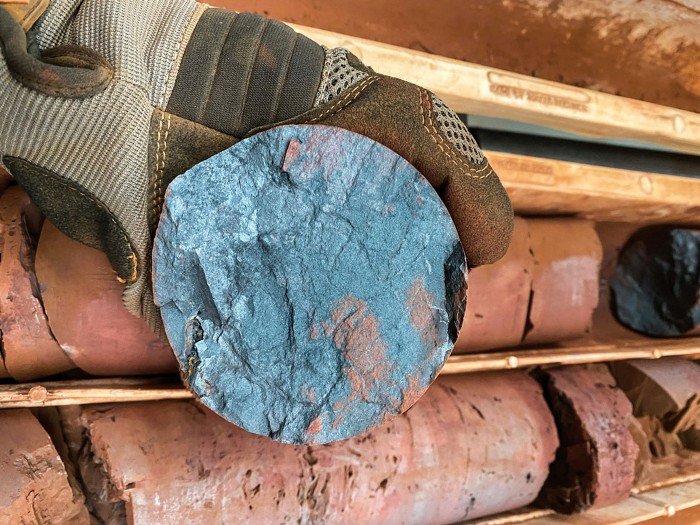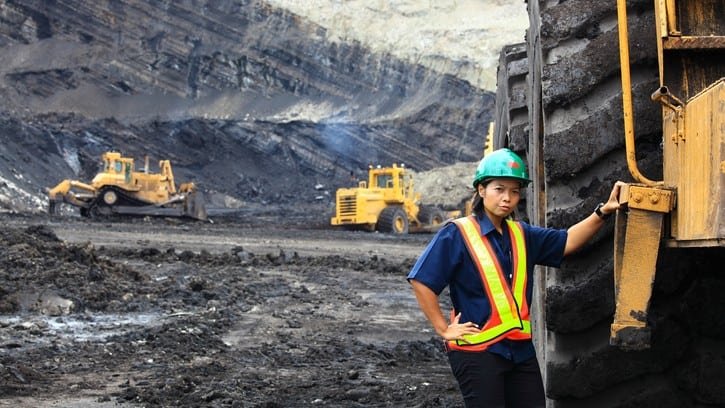World’s Largest Iron Ore Discovery: A Game-Changer for Geology, Mining, and Global Industry
In what could be described as a monumental breakthrough in both geological science and the global mining industry, geologists in Australia have unveiled the largest iron ore deposit ever recorded—an estimated 55 billion metric tons buried beneath the Hamersley Province in Western Australia. This discovery not only carries staggering economic potential but also challenges long-standing theories about how mineral deposits form and evolve across geological timescales.
At Lux Metal, we specialize in understanding the strategic impact of such discoveries on industries that depend on metals for infrastructure, innovation, and growth. In this blog post, we take a deep dive into the implications of this find, unpacking the science, economics, and future-facing opportunities that make this more than just another deposit—it’s a turning point.
🧱 What Is Iron Ore?
Iron ore is a naturally occurring rock or mineral from which metallic iron (Fe) can be economically extracted. It forms the essential raw material used in producing steel, the backbone of modern infrastructure and engineering.
There are several types of iron ores, the most common of which are:
- Hematite (Fe₂O₃) – High-grade ore with over 60–70% iron content.
- Magnetite (Fe₃O₄) – Contains 50–70% iron; magnetic and highly sought after.
- Limonite (FeO(OH)·nH₂O) – Lower-grade ore, often found with impurities.
- Siderite (FeCO₃) – Less common and economically less viable.
These minerals are processed to extract iron, which is then used to create steel—a metal vital to every major industry on Earth, from construction and automotive to energy, aerospace, and manufacturing.
🌍 How Does Iron Ore Form?
Iron ore deposits form over hundreds of millions to billions of years under very specific geological conditions.
Most of the world’s iron comes from ancient rock layers called banded iron formations (BIFs). These formed over 1.8–2.5 billion years ago when Earth’s early oceans were rich in dissolved iron but devoid of oxygen.

Here’s how it happened:
- Volcanic activity released iron into the oceans.
- Primitive microorganisms began producing oxygen via photosynthesis.
- This oxygen reacted with the dissolved iron, causing it to precipitate and fall to the ocean floor.
- Over time, layers of iron-rich rock and silica formed—these became the BIFs.
- Geological heat and pressure transformed these layers into iron ore, and subsequent tectonic activity brought them closer to the Earth’s surface.
The newly discovered Australian deposit, however, rewrites part of this narrative. Dating techniques show the ore is not 2.2 billion years old, as previously assumed, but only 1.4 billion years—suggesting iron ore may form in more varied and dynamic environments than we thought.
🔬 How Is Iron Ore Found?
The discovery of iron ore deposits typically involves several scientific and exploratory techniques, including:
- Geological Surveys – Mapping rock types and formations to locate ancient marine environments.
- Geochemical Sampling – Testing soil, rock, and stream sediments for traces of iron.
- Remote Sensing – Using satellites and drones to identify magnetic anomalies.
- Geophysical Methods – Employing magnetometers and gravity sensors to find dense, iron-rich rocks.
- Drilling and Core Sampling – Taking subsurface samples to verify the quality and concentration of ore.
- Isotopic Dating – In this case, uranium-lead isotopic dating was used to determine the age of zircon crystals in the surrounding rock, revealing a surprisingly young iron formation.
In the case of the Hamersley Province, a combination of satellite imaging, isotopic dating, and detailed chemical analysis unveiled the true scale and age of the ore body—offering an incredible blueprint for future discoveries worldwide.
📍 Where Is Iron Ore Typically Found?
Iron ore deposits are found all over the world, but the largest and most economically viable reserves are concentrated in:
- Australia – Especially the Pilbara region in Western Australia, which includes the new deposit.
- Brazil – Home to the massive Carajás Mine, one of the richest iron ore mines in the world.
- China – Large but often lower-grade deposits.
- Russia, Ukraine, India, and South Africa also hold substantial reserves.
These regions tend to have ancient rock formations that were once part of early ocean basins—ideal conditions for the formation of banded iron layers.
🚨 The Hamersley Revelation: A Deposit That Defies Convention
The newly discovered 55 billion metric ton reserve is located in the Hamersley Province—already known for some of the richest iron deposits on Earth. Yet this find stands apart for multiple reasons:
- Size: At 55 billion tons, it surpasses even the largest known deposits in Brazil and Africa.
- Purity: Through natural processes, the iron content has increased from 30% to over 60%, making it ideal for steelmaking.
- Geological Surprise: Uranium-lead dating shows the deposit is about 1.4 billion years old, not 2.2 billion as previously believed.
According to Dr. Liam Courtney-Davis of Curtin University, “This deposit forces us to rewrite significant chapters of Earth’s mineral history and explore the untapped potential of younger formations globally.”

The newly discovered deposit in Hamersley is massive—estimated at 55 billion metric tons with an iron concentration that has increased from 30% to over 60% through natural geological enrichment processes. Based on a conservative market average of $105 per metric ton, the deposit’s value could exceed $5.7 trillion USD. That’s not a typo—trillions.
But size isn’t everything. What truly sets this deposit apart is its age and formation process. Previously, geologists believed that iron ore deposits in this region formed around 2.2 billion years ago. New isotope analysis—specifically uranium-lead dating—reveals that the deposits are only 1.4 billion years old. This younger age not only rewrites local geological history but also forces scientists to reassess the broader global models of mineral deposit formation.
How Was It Discovered? The Science Behind the Find
This discovery wouldn’t have been possible without modern scientific techniques. Researchers used a combination of:
- Uranium-Lead Isotopic Dating: Determines the age of zircon crystals embedded in the iron ore, providing precise dating to within millions of years.
- Geochemical Analysis: Measures concentrations of iron, silica, and trace elements to map the deposit’s formation over time.
- Microscopy and Electron Imaging: Offers visual evidence of mineral evolution, including the transformation of banded iron formations into enriched hematite and magnetite ores.
Together, these methods have produced an unprecedented level of detail about how and when this ore body formed.
Why the Age of the Deposit Matters
At first glance, the difference between 2.2 billion and 1.4 billion years may seem trivial. But in geology, a shift of 800 million years is monumental. It suggests that the Earth’s crust was more dynamic than previously thought and that large-scale tectonic activity and chemical enrichment processes continued far later than assumed.
The revised timeline connects the deposit to cycles of supercontinent formation and breakup. This is significant because it shows that large iron deposits may form during the stabilization of continental plates, suggesting untapped potential in regions with similar geological histories.
Economic Impacts: Australia’s Role as a Global Leader
Australia has long been the world’s iron ore powerhouse, but this discovery secures its dominance well into the future. The Pilbara region already exports over 800 million metric tons of iron ore annually. With this new reserve, future production could scale up without needing to open new territories, streamlining logistics and minimizing environmental impact.
Australia already leads the world in iron ore exports, accounting for about 60% of global seaborne iron ore trade. With this discovery, Australia is set to solidify its dominance for decades.
Impacts include:
- Iron Price Stabilization: Increased supply may reduce volatility in global iron and steel markets.
- Strengthened Trade Leverage: Australia may gain bargaining power in international trade agreements.
- Industry Growth: Mining companies like BHP, Rio Tinto, and Fortescue Metals are expected to ramp up investment and operations.
This also benefits downstream industries—steel production, construction, shipbuilding, automotive, aerospace, and infrastructure—which rely on stable, high-quality iron ore supplies.
Technological Implications: Mining Smarter, Not Just Harder
Modern mining isn’t just about digging deeper; it’s about being smarter. The precision of isotope dating and geochemical analysis used in this discovery sets a precedent for how future exploration can become more targeted, efficient, and sustainable.
At Lux Metal, we believe this discovery will fast-track the adoption of:
- AI in mineral prediction: Machine learning algorithms trained on geochemical signatures could identify new sites faster than traditional exploration methods.
- Remote sensing and drone mapping: Useful for mapping mineral content and land conditions before boots even hit the ground.
- Green extraction techniques: As environmental scrutiny rises, so will demand for low-carbon mining technologies.
These innovations don’t just make mining more sustainable—they open doors for countries with previously unexplored potential.

Rethinking Global Supply Chains and Trade Policy
As the supply of iron becomes more secure, global manufacturers may reconsider where they source their raw materials. Countries like China, which rely heavily on iron imports, may adjust their strategies to secure long-term contracts with Australian suppliers.
This could impact everything from:
- Shipping routes and port infrastructure
- Tariff negotiations and free trade agreements
- Stockpiling strategies for steel manufacturers
Governments might also revise their critical minerals lists and national security policies to reflect this new abundance of a strategic resource.
🏗️ Implications for Industry and Innovation
At Lux Metal, this discovery reinforces our long-term strategy of staying informed, adaptable, and technologically progressive.
How this impacts Lux Metal and our customers:
- Stable Raw Material Supply: Lower risk of supply disruption and price spikes.
- New Material Development: Higher-grade iron ore means better steel and alloy quality.
- Innovation Opportunities: New knowledge could lead to custom alloys, better welding practices, and enhanced structural applications.
- Sustainability: A single large deposit reduces the need for scattered mining operations, leading to lower environmental impact.
We see this as an opportunity not just for the mining sector but for metal fabricators, manufacturers, and engineers across industries.
Lux Metal’s Take: Why This Matters to Our Clients
At Lux Metal, we keep a close eye on developments like this because they affect everything from the cost of materials to innovation in product design. Here’s how this find aligns with what we do:
- Cost Efficiency: More iron means more availability, potentially lowering long-term prices for steel products.
- Supply Chain Stability: Clients in construction, manufacturing, and logistics benefit from predictable material flows.
- Product Innovation: Insights into new ore properties can inspire new alloys and applications, from lightweight construction to high-durability machinery.
We integrate this kind of forward-looking information into our operations to ensure our clients remain competitive and informed.
Explore More with Lux Metal
At Lux Metal, we provide state-of-the-art metal solutions for industries seeking precision, innovation, and sustainability. From stainless steel fabrication to custom metal projects powered by CNC technology and advanced machinery, we bring technical expertise and unmatched quality to every project.
➡️ Visit our website to learn how Lux Metal is shaping the future of metal manufacturing: www.luxmetalgroup.com.
Conclusion: Embracing Opportunities and Responsibilities
The unearthing of this colossal iron ore deposit in Western Australia marks a significant milestone in both the mining industry and geological sciences. As the world grapples with the implications of this discovery, it presents an opportunity to advance our understanding of Earth’s history, bolster economic growth, and reinforce the importance of sustainable practices in resource extraction.
At Lux Metal, we recognize the dual imperative of leveraging such opportunities for growth while upholding our commitment to environmental stewardship and innovation. We are dedicated to delivering superior metal solutions that meet our clients’ needs and contribute positively to the industry’s future.
References
- Australia’s 55 billion tons of iron ore – Metal Tech News
- Geologists found the world’s largest iron ore deposit – Earth.com
- Geologists Uncover the Largest Iron Ore Deposit in History—Valued at a Staggering $5.7 Trillion
- “An Unimaginable Fortune”: 55 Billion Tons of Iron Discovered in Hidden Reserve Worth Trillions of Dollars and Set to Reshape Global Industry – Sustainability Times
- World’s largest iron ore deposit found in Australia | Mysteel
- World’s largest iron ore deposits formed over 1 billion years ago in supercontinent breakup | Live Science
- Ore-some: New date for Earth’s largest iron deposits offers clues for future exploration | ScienceDailyMetal Tech NewsEarth.com+1Indian Defence Review+1Daily Galaxy+1Daily Galaxy+1Sustainability TimesChina Steel & Commodities Price and…Live ScienceScienceDaily

